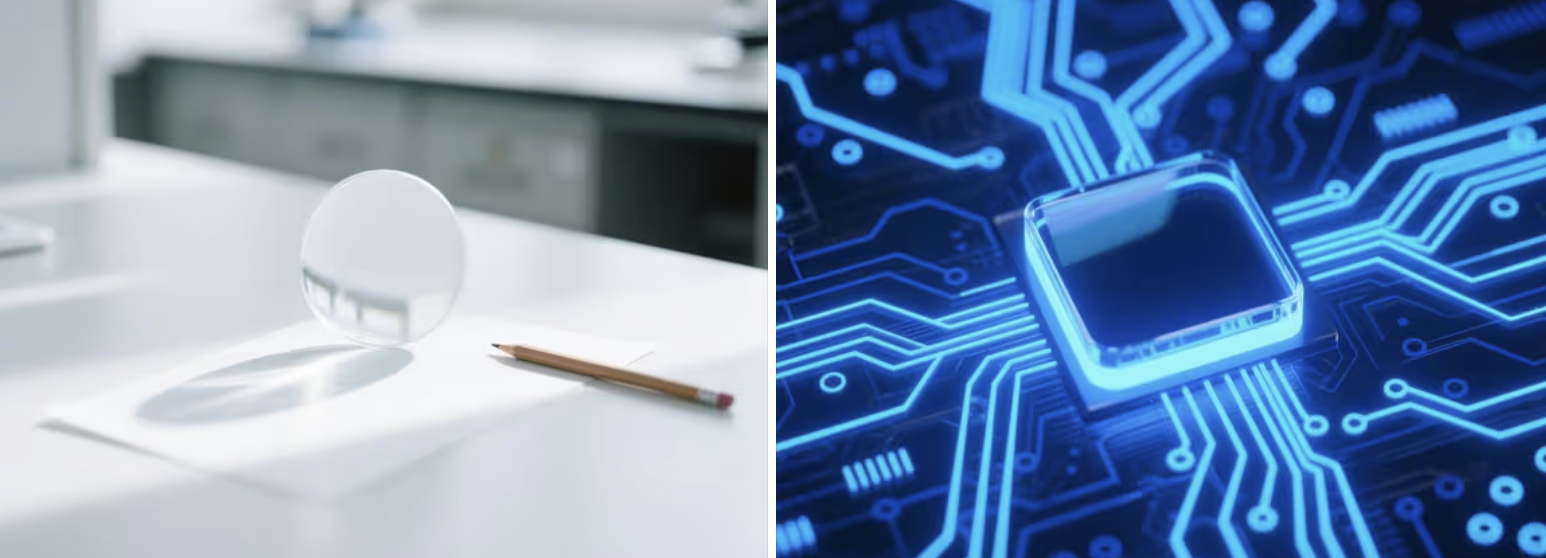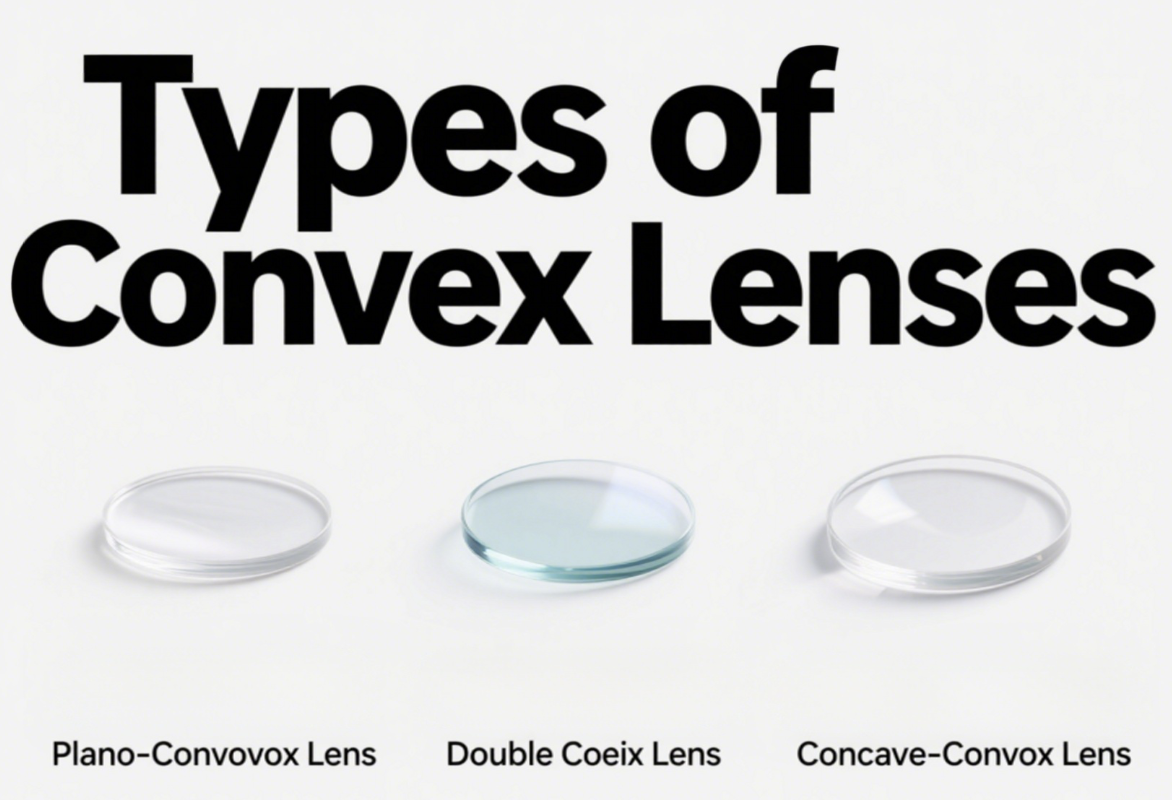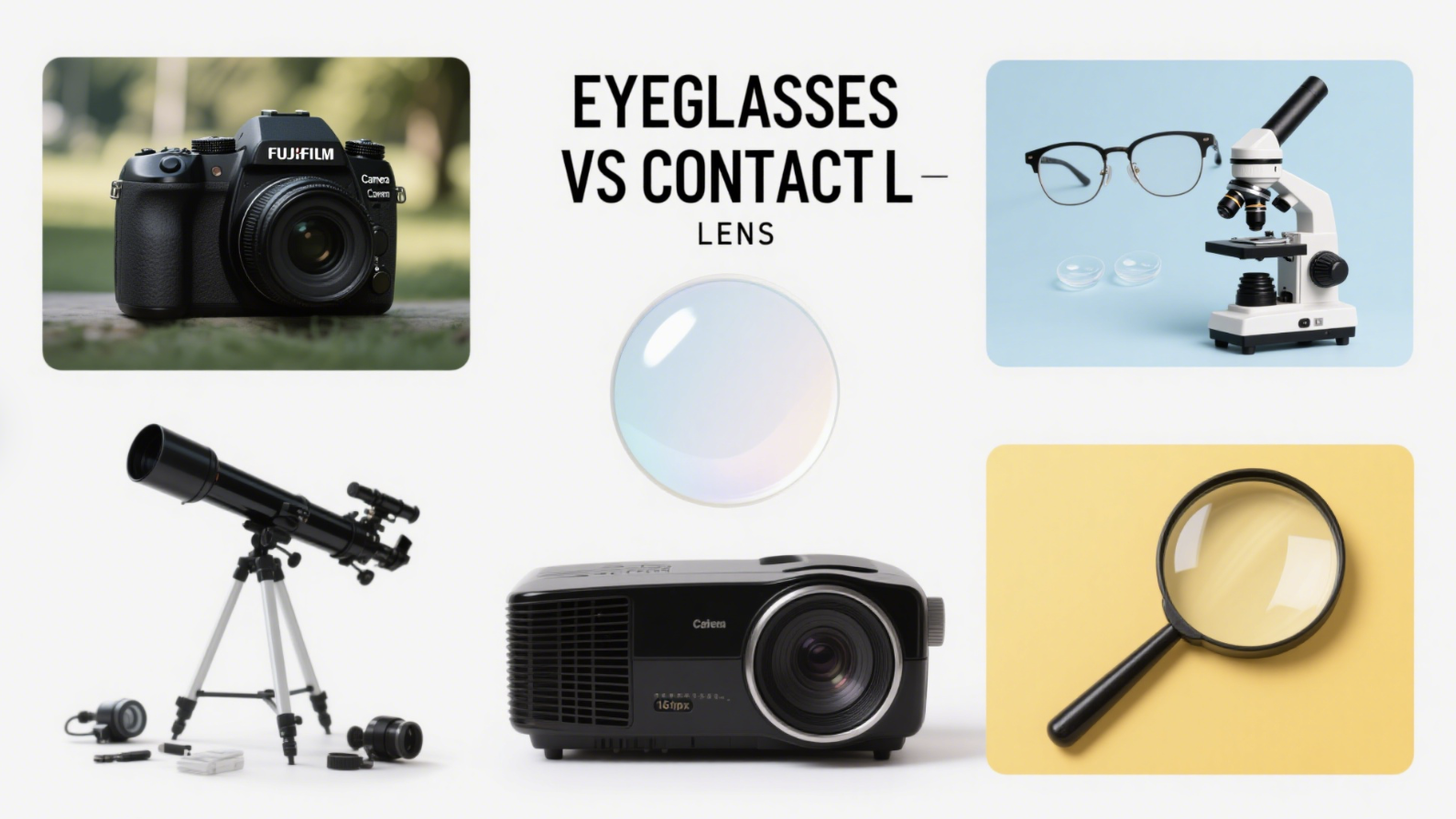close
Choose Your Site
Global
Social Media
Views: 54 Author: Site Editor Publish Time: 2025-05-16 Origin: Site




A convex lens is a fundamental optical component used to converge light and form images in devices like cameras, microscopes, and corrective eyewear. Defined by its outward-curving surfaces and positive focal length, the convex lens is essential in both scientific and industrial applications. This guide explains what a convex lens is, how it works, its key types, and practical uses—providing a clear understanding for anyone exploring optical systems or precision imaging technology.
Let’s keep it simple: a convex lens is a piece of transparent material that bends light inward. It’s thicker in the middle and thinner at the edges — kind of like an eye-shaped pancake that puffs out in the center.From a science perspective, this type of lens refracts (bends) light rays so they all meet at a single point. That meeting spot is called the focal point. You’ll hear this lens called “positive” in physics, thanks to its ability to bring light together instead of scattering it.

A convex lens is also called a converging lens because it bends (or refracts) incoming parallel light rays toward a single point, known as the focus. Its curved shape causes the light rays to converge after passing through the lens. This focusing ability makes it useful in magnifying glasses, cameras, and corrective eyewear.
Here’s the big idea: light bends when it moves through materials like glass or water. That bending is called refraction.
When light hits a convex lens, it slows down and bends toward the normal — that’s an imaginary line we draw to help understand the angle. Once it passes through, it bends again. But this time, it bends inward, aiming toward a central point.
Why does this happen? It’s all about the shape. Convex lenses have curved surfaces — thicker in the middle. This shape makes the outer edges of the lens bend incoming light more sharply than the center. As a result, the light rays start heading toward each other.
A convex lens doesn't just bend light. It guides it to meet at a specific place. That place is called the focal point.
Here’s what happens:
Light rays travel straight toward the lens. Each ray bends as it hits the curved glass. After passing through, they all cross paths at one spot — that’s the focus.
This distance from the lens center to that point? It’s called the focal length.
Here’s a quick breakdown of the journey:
Light hits the first curved surface → slows down and bends inward.
It travels through the lens material.
Then hits the second surface → bends again.
Ends up converging at the focal point.
The result? Depending on where the object is, you’ll get a:
Real, inverted image (if the object is farther than the focal length).
Virtual, upright image (if the object is close to the lens).
Let’s visualize it:
| Object Position | Image Formed | Image Nature |
|---|---|---|
| Beyond 2F | Between F and 2F | Real, inverted |
| At F | At infinity | No image |
| Between F and lens | On same side | Virtual, upright |
That’s why you can use a convex lens in both projectors and magnifying glasses — it just depends on where you put the object.
Let’s break down what makes a convex lens actually work. It’s not just curved glass, every part plays a role.
This is the “heart” of the lens — smack in the middle. Any light ray that passes through this point? It goes straight. No bending. No funny business. We usually mark it with an “O”
That’s the distance from the optical center to the point where all light rays meet — the focal point. If the lens is strong (more curved), the focal length is short. If it’s weaker, the length is longer.
Imagine the lens is part of a big circle or sphere. The center of that circle? That’s the center of curvature. The radius is the distance from that center to the lens surface.
Quick chart:
| Term | Description |
|---|---|
| Radius of Curvature | Distance from lens surface to curvature center |
| Center of Curvature | The “imaginary” sphere’s central point |
Think of this as the opening of the lens — the part that lets light through. Bigger aperture? More light enters. More brightness and clarity.
This one’s easy — a straight line going through the optical center. It's like the lens’s highway. Everything important happens along this line.
Here’s why all these parts matter — they decide how light behaves.
| Part | What It Does |
|---|---|
| Optical Center | Keeps light rays undisturbed if they pass through it |
| Focal Length | Sets how strong the lens is at focusing light |
| Radius of Curvature | Affects the sharpness of bending (more curve = stronger focus) |
| Aperture | Controls light entry — more light = brighter image |
| Principal Axis | Aligns all key points: optical center, focus, etc. |
Let’s say you're using a magnifying glass. If the focal length is short, you get a bigger, closer view. If the aperture is wide, you see a brighter image.Each part is like a teammate. They work together to bend, focus, and guide the light to form an image you can actually use.

Not all convex lenses look the same. They may bend light the same way, but their shapes — and what they’re good at — are totally different. Let’s check out the three main types.
A plano-convex lens has one side that’s flat and the other that curves outward. It's kind of like a dome sitting on a table.
One flat surface, one convex (curved out) surface
Focuses parallel light into a single point
Focusing optics: Especially where light comes in as straight beams
Robotics and simple medical tools
Low-precision systems, because it's easy and cheap to produce
This one has two bulging sides. It's the classic convex lens shape — what most people picture first.
Both sides curve outward (symmetrically)
Focuses light faster than a plano-convex lens
Projectors: To make images bigger and brighter
Cameras: Helps sharpen focus
Microscopes and scientific instruments
This one’s a mix — one side curves inward, the other outward. Think of it like a shallow bowl on top of a bubble.
Combination of convex and concave shapes
Can sharpen or correct light rays from other lenses
Laser systems: Helps shape and direct beams
Correcting spherical aberration in high-performance optics
Used where image sharpness matters a lot Here’s a side-by-side comparison to help you quickly understand the differences:
| Lens Type | Surface Shape | Focal Length | Common Uses | Special Features |
|---|---|---|---|---|
| Plano-Convex Lens | One flat side, one outward-curved side | Medium to long | Focusing optics, robotics, medical tools | Best for collimated light; simple, low-cost |
| Double Convex Lens | Both sides curve outward | Short (strong focus) | Cameras, projectors, microscopes | Strong convergence, high magnification |
| Concave-Convex Lens | One side curves in, one curves out | Customizable | Laser systems, precision optics | Corrects image blur; combines convex + concave |
Each type bends light in a specific way based on its shape — and that’s why we choose different lenses for different jobs.
Convex lenses are known for how they bend and focus light. Their shape gives them some Interesting powers — let’s break it down.

This is the big one. A convex lens brings light rays together. When parallel rays hit the lens, they all bend inward and meet at one spot — the focal point.
Unlike mirrors or concave lenses that only create virtual focus points, convex lenses form a real focus. That means the rays actually cross at a physical location in space. You can project this point onto a screen.
Focal length tells us how strong the lens is at bending light. For convex lenses, this length is always positive. It’s measured from the optical center to the focal point, along the principal axis.
When objects are placed beyond the lens’s focal point, the image forms on the other side — real and upside down. These images can be caught on a screen or sensor.
Each property changes what kind of image you get. It all depends on where the object is placed.
Let’s look at how this works:
| Object Position | Image Position | Image Nature | Image Size |
|---|---|---|---|
| Beyond 2F | Between F and 2F | Real, inverted | Smaller |
| At 2F | At 2F | Real, inverted | Same size |
| Between F and 2F | Beyond 2F | Real, inverted | Larger |
| At F | At Infinity | No real image | Highly enlarged |
| Closer than F | Same side as object | Virtual, upright | Magnified |
In other words,how and where you place something in front of a convex lens totally changes what you see.
A convex lens doesn't make just one kind of image. It all depends on where the object is. Move it closer or farther — the image flips, grows, shrinks, or even disappears.
Here’s what to expect:
Real image: Light rays actually meet. You can project it onto a screen.
Virtual image: Rays don’t meet, but your eyes think they do. These can’t be projected.
Inverted: Flipped upside down. This happens in real images.
Upright: Right-side up. You’ll only get this with virtual images.
Magnified: Larger than the object — great for magnifying glasses.
Diminished: Smaller — happens when objects are far away.
So basically, one lens = many image possibilities.
Convex lenses aren’t just science-lab stuff — they’re everywhere. From smartphones to space telescopes, they help us see, zoom, focus, and explore.
A camera lens uses convex glass to bend light rays inward. It captures sharp images by focusing them on a sensor or film. By adjusting the lens position, you change the zoom and focus.
Photographers use lenses with different focal lengths:
Short focal length = wide view
Long focal length = zoomed-in detail
People with farsightedness (hypermetropia) can't focus on nearby things. Why? Their eye lens doesn't bend light enough. So, the image forms behind the retina.
A convex lens fixes that. When placed in glasses or contacts, it bends incoming light just right, helping the eye focus on the retina.
Microscopes use multiple convex lenses to magnify tiny stuff — like cells or bacteria.Some microscopes can zoom up to 1000×!
Here’s how it works:
One lens collects light from the object.
Another enlarges the image for your eye.
Refracting telescopes use two:
One lens gathers and focuses light from space.
The other zooms in on the image.
This combo makes planets, moons, and distant galaxies visible to the human eye.
A projector flips and blows up small images onto a big screen. The convex lens takes the tiny image from a slide or video chip and magnifies it.
Since the image gets flipped, the input has to be upside-down — that’s how it shows up correctly on the wall.
Hold a convex lens close to an object , it looks bigger.That’s because light rays from the object are bent inward before they reach your eyes. A virtual, upright, and magnified image.
For example,you’ve used it for reading tiny print, burning paper in the sun, or inspecting bugs.

Convex and concave lenses might look similar at first, but they behave in totally different ways. Let’s lay it all out clearly:
| Feature | Convex Lens | Concave Lens |
|---|---|---|
| Nature | Converging — bends light inward to meet | Diverging — spreads light outward |
| Focal Length | Positive — rays meet at a real point | Negative — rays appear to come from behind |
| Focus | Real — rays actually intersect | Virtual — rays only appear to meet |
| Shape | Thicker in the center, thinner at the edges | Thinner in the center, thicker at the edges |
| Example Uses | Cameras, microscopes, eyeglasses (farsighted) | Flashlights, peepholes, lasers (short range) |
So when you're zooming in on a star or magnifying text, you're probably using a convex lens. But when you're lighting up a hallway or using a laser pointer, a concave lens is doing the job.
A: Yes. It forms real images when the object is beyond the focal point, and virtual images when the object is placed between the lens and its focus.
A: When light rays from an object pass through the lens and converge, they cross over, which flips the image upside down — that’s why real images are inverted.
A: It’s thicker in the center and thinner at the edges, with outward-curving surfaces. It usually bulges on one or both sides.
A: Yes. Meniscus (concave-convex) lenses are often used in laser systems to control beam shape and correct spherical aberration.
Convex lenses are more than just optical tools — they’re essential parts of devices we use daily. At Band Optics Co., Ltd, we specialize in crafting high-quality convex lenses that power everything from eyeglasses to advanced scientific instruments. Their precision and clarity help people see better and explore further.
content is empty!